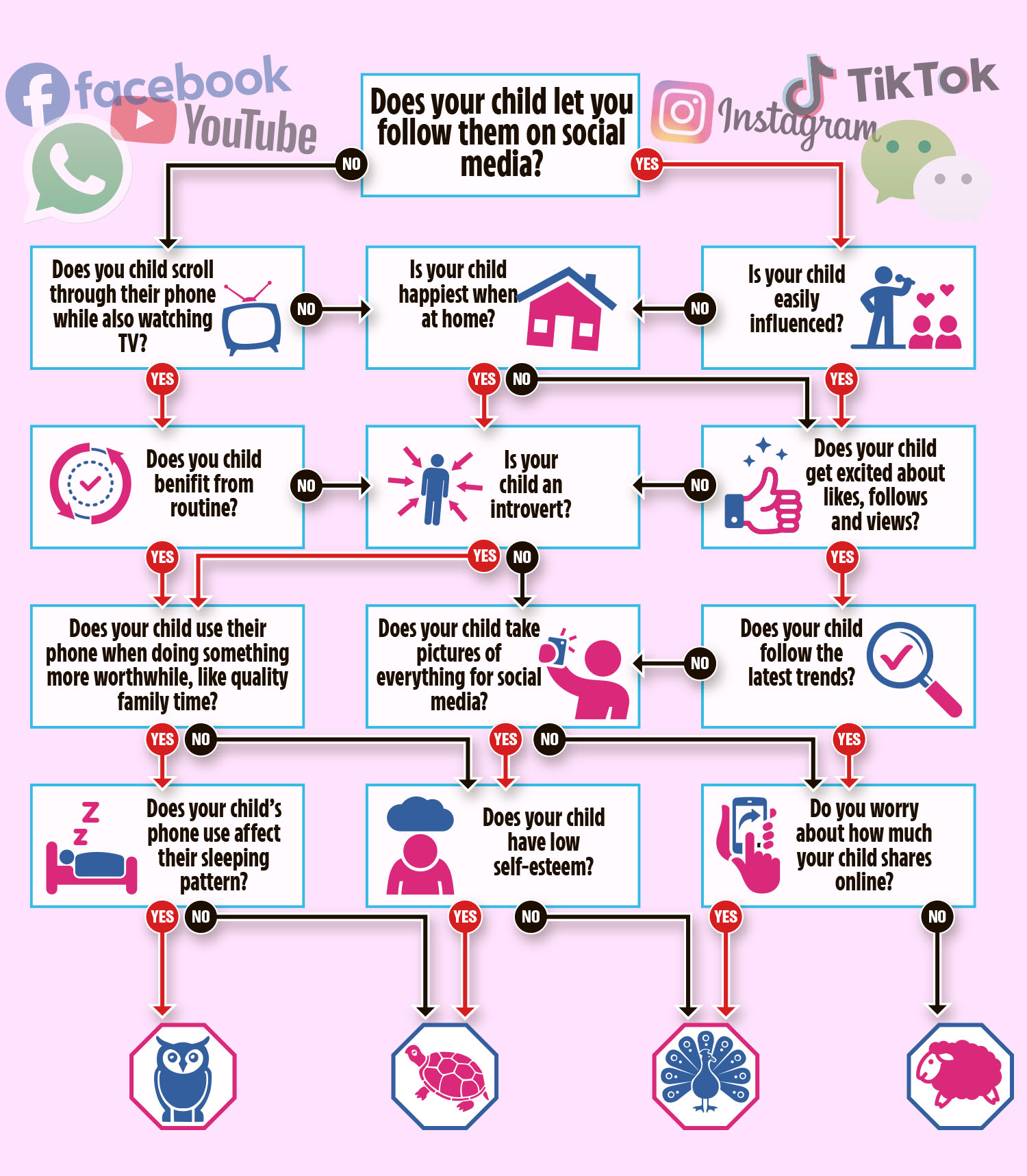JO FROST, TV’s Supernanny, has blasted parents who use smartphones and iPads as “electronic babysitters”.
She also worries that tech-obsessed teens get stuck in “anxious patterns of withdrawal” when not glued to their devices.
According to research, children aged between four and 18 now spend 127 minutes a day on social media app TikTok.
Experts have warned excessive screen time can be damaging to youngsters, contributing to obesity, sleep problems and anxiety.
Jennifer Bruton, of tech company Bores, says: “It can disconnect children from reality.
“The best way to manage it is to educate children about social media.”
Now try the quiz to find which social media “animal” your child is, as Jennifer explains how to tackle their addiction.
Owl
THIS type spends hours online before bed and may try to stay awake longer to be on social media.
They might also spend their time looking at the screen when you are watching TV as a family.
If your child suddenly becomes sleepy, disengaged or irritable during the day, that’s a tell-tale sign they are an owl.
Set a curfew and agree on a spot where their phone can be left when it is bedtime.
Or try using a parent app, such as Kaspersky, that restricts apps at specified times.
This allows them to have their phone for other uses, such as music, but helps them understand when it is time to stop certain activities. iPhones have their own parental control app built in.
Schedule part of the day before bedtime as together time, with no distracting phones, to show you are also invested.
This could be having a hot drink, talking about your day, or reading.
It helps to provide positive distractions and show there are other avenues of entertainment.
Tortoise
PREFERS social media to real life and will often retreat from company to spend time on their phone.
Usually shy but when they do venture out, tend to spend time on screen to give them something to do.
They might even hide in the toilet to scroll away.
This user needs excellent understanding from parents that people’s personalities are different.
Certain people naturally prefer their own company, or to socialise online.
It is important to recognise it as a valid form of interaction.
Some people gain far more interaction from social media than they would from a real-life situation.
But it is crucial to make sure they are not using their phones as a crutch to avoid life.
Getting a reasonable and achievable routine or time limit is particularly useful for the tortoise.
For time limits to really help, it is important to find alternative interests – ones they enjoy and suit their personality type – to engage them when they are without their phone.
Peacock
THESE online animals share pretty much everything they do, from selfies on the train to where they live. But this can be dangerous.
You need to talk about basic security issues, such as not posting their location.
Build an understanding of what it means to share something publicly and explain posted information can become irretrievable once in the public domain.
Showing respect for your child’s desire to share is important. But support this with helping them understand why they want to share it and whether there is a healthy reason.
For example, it has become a trend to show what presents they get for birthday or Christmas.
But is your child sharing it for a good reason, or to show off?
Encourage them to let you follow their account. Use this as a positive, by engaging constructively with their social media use, rather than as a method to “spy” on them.
Sheep
THE sheep has a set of celebrity idols they look up to.
They may not post lots of their own content but their decisions could be influenced by others.
This kind of user benefits from talk, and reinforcement.
Help them understand their individuality is important. Do this by celebrating it and praising the things that make them different.
Also understand why they admire people. Is there genuine interest or are they idolising them out of pressure from others?
It is important for them to know what is seen online is not always accurate and real.
Encourage them not to jump to conclusions and to question why someone is saying or doing something.
Then they can make their own judgment on whether they really feel the same.
This user also tends to follow the latest trends and crazes, so make sure they understand the dangers that come with this.
We do not want to scare them, but we need to be honest.







